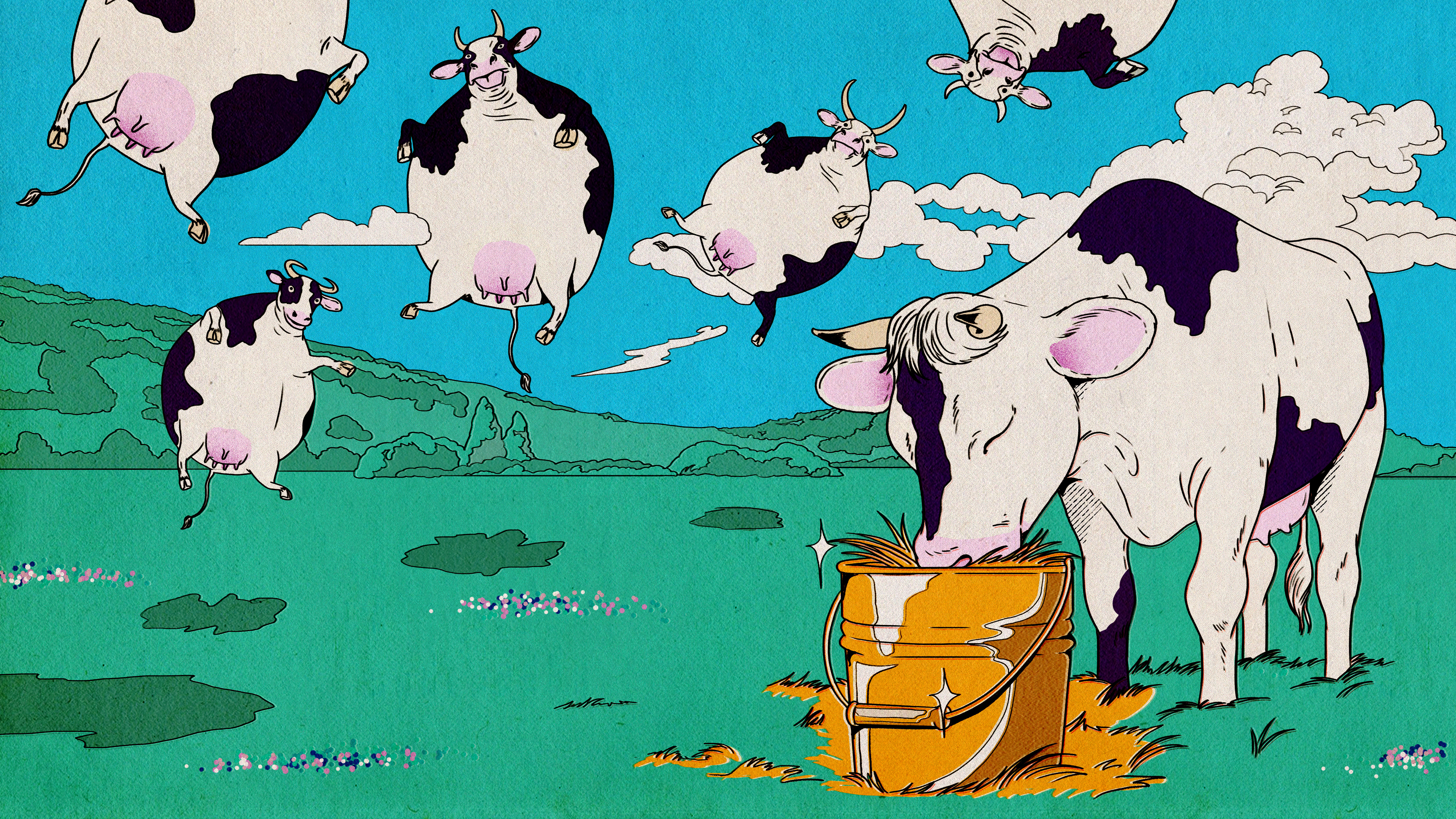Cattle burping remedies: 10 Breakthrough Technologies 2025
Additives that substantially reduce one of the biggest sources of agricultural emissions are finally hitting the market.

WHO
Blue Ocean Barns, DSM-Firmenich, Rumin8, Symbrosia
WHEN
Now
Companies are finally making real progress on one of the trickiest problems for climate change: cow burps.
The world’s herds of cattle belch out methane as a by-product of digestion, as do sheep and goats. That powerful greenhouse gas makes up the single biggest source of livestock emissions, which together contribute 11% to 20% of the world’s total climate pollution, depending on the analysis.
It’s hard to meaningfully cut those emissions by reducing demand, simply because hamburgers, steaks, butter, and milk taste good—and a global population that’s growing larger and wealthier is only set to consume more of these foods.
Explore the full 2025 list of 10 Breakthrough Technologies.
Enter the cattle burping supplement. DSM-Firmenich, a Netherlands-based conglomerate that produces fragrances, pharmaceuticals, and other products, has developed a feed supplement, Bovaer, that it says can cut methane emissions by 30% in dairy cattle and even more in beef cattle. It works by inhibiting an enzyme in the animals’ guts, which ordinarily helps convert hydrogen and carbon dioxide produced during digestion into the methane that they burp up.
In May 2024, the Food and Drug Administration cleared the way for its use in the US. DSM says the additive is now available in more than 55 countries, including Australia, Brazil, and members of the European Union.
Meanwhile, startups like Blue Ocean Barns, Rumin8, and Symbrosia are developing, testing, or seeking approval for products derived from a type of red seaweed, which could reduce methane levels even further. Still other organizations are trying to tackle the problem in longer-lasting ways, by developing vaccines or altering the microbes in the guts of cattle.
It remains to be seen how many cattle farmers will pay for such products. But in the case of Bovaer, farmers who use it can earn greenhouse-gas credits that some companies will buy on voluntary carbon markets as a way to reduce their corporate climate footprints, according to Elanco, which is marketing the additive in the US. Meanwhile, Rumin8 says cattle taking its supplements could deliver more meat and milk.
The additives certainly don’t solve the whole problem. The cattle industry needs to take other major steps to cut its climate emissions, including halting its encroachment into carbon-absorbing forests. And to make any real dent in demand, food companies will have to develop better, cheaper, cleaner alternative products, like plant-based burgers and dairy substitutes.
But methane-cutting supplements increasingly look like a promising way to solve a big chunk of a very big problem.
Deep Dive
Climate change and energy
What China’s critical mineral ban means for the US
The nation has signaled it’s prepared to hit back harder still, in ways that could inflict serious economic pain on its biggest economic rival.
What’s next for nuclear power
Global shifts, advancing tech, and data center demand: Here’s what’s coming in 2025 and beyond.
Why the next energy race is for underground hydrogen
Hydrogen can be used in chemicals and as a green fuel. Vast underground stores could help make it an economical option.
China banned exports of a few rare minerals to the US. Things could get messier.
Gallium and germanium are used to make semiconductors. Could battery materials be the next target?
Stay connected
Get the latest updates from
MIT Technology Review
Discover special offers, top stories, upcoming events, and more.